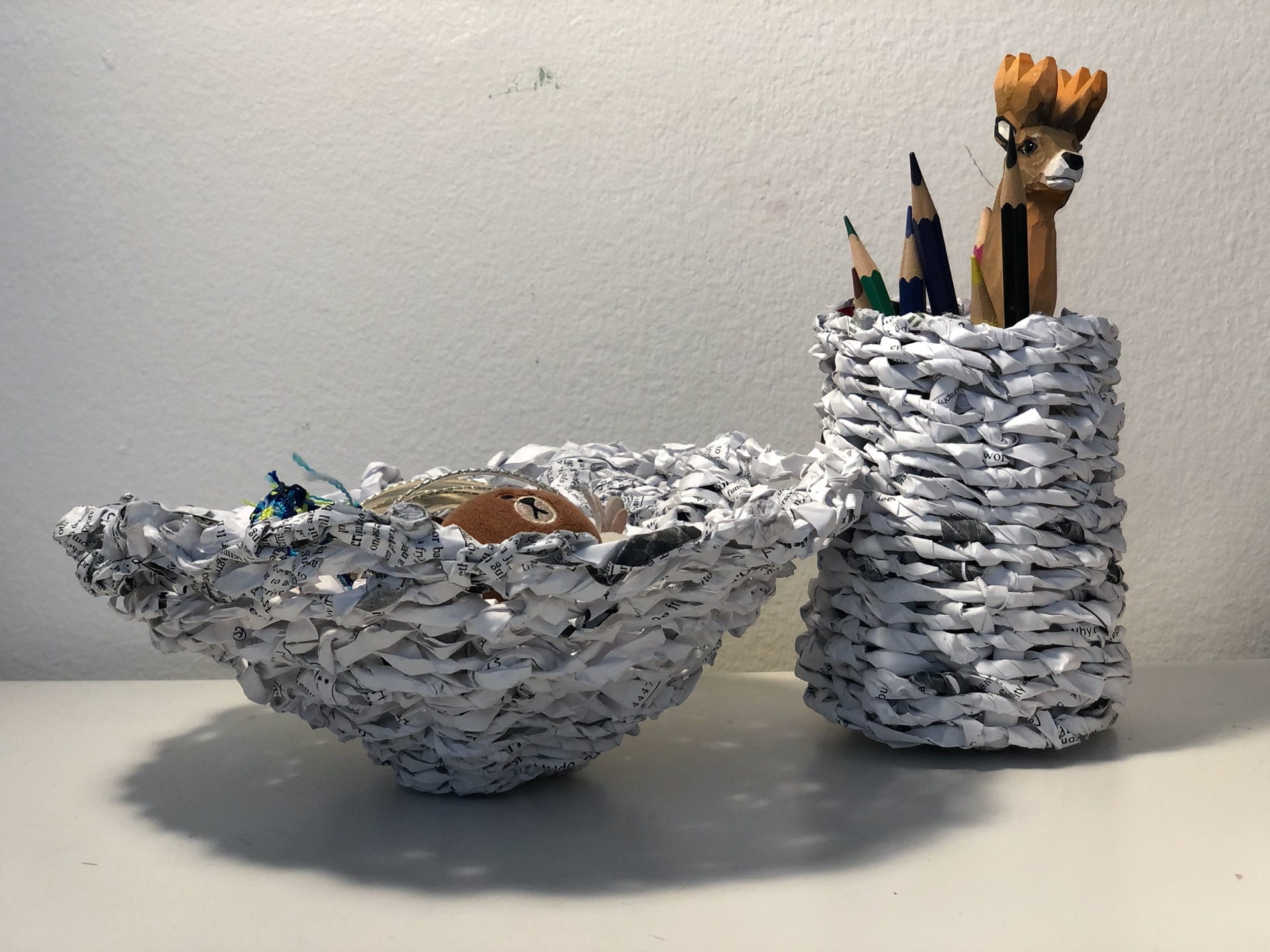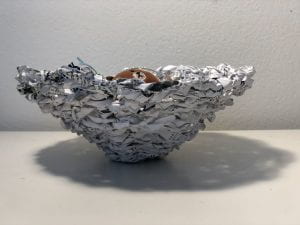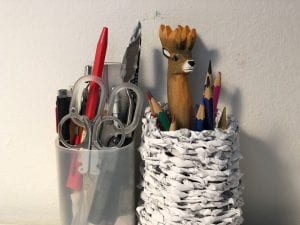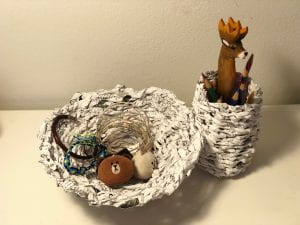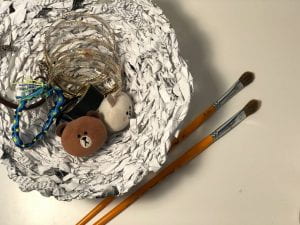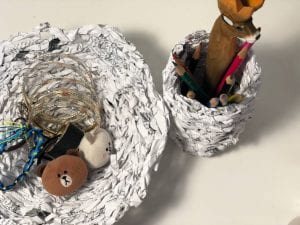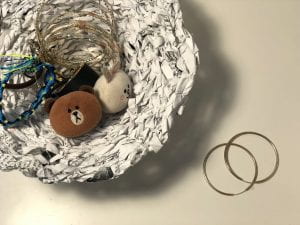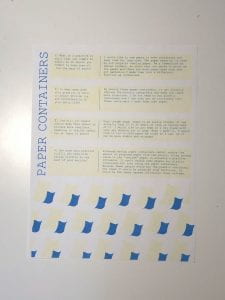1) LONG LIFE DESIGN — PAPER CONTAINERS
Process
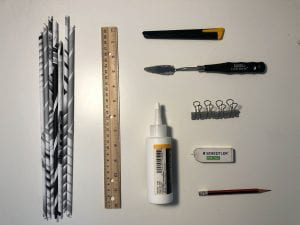 tools: paper, ruler, book-binding glue, box cutter, clips, pencil and eraser.
tools: paper, ruler, book-binding glue, box cutter, clips, pencil and eraser.
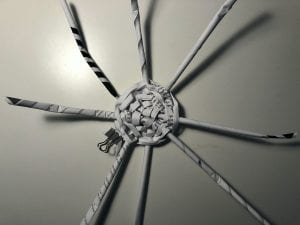 Testing: learn how to weave paper strings and make prototypes.
Testing: learn how to weave paper strings and make prototypes.
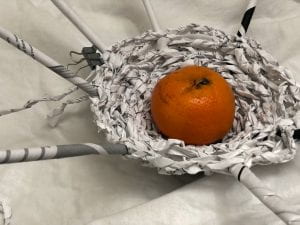 Start: start to make the actual projects
Start: start to make the actual projects
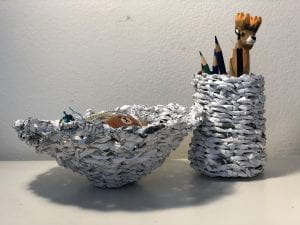 Done! Patience and focus is the key.
Done! Patience and focus is the key.
Presentation of final works
2) DESIGN BRIEF POSTER
1) What is a practice/skill that you commit to enact, or an object you commit to take care of, for the next 10 years?
I would like to use paper to make containers and keep them for long time. The paper material is from my old project testing paper. As a communication design student, we often test our works to print on the paper and there are much paper used once and got. wasted, so I made them into different function as containers.
2) In what ways does this practice/skill or object provide joy and functionality in your daily life?
By making these paper containers, it can actually replace the plastic containers and make the table more organized. I do not need to buy plastic containers and I can just put my stationery into these containers I made from used paper.
3) How will you repair and/or make this object or process more resilient, enabling it last/be useful for at least 10 years?
Even though paper seems to be easily broken, it can actually last 10 to 20 years as long as taking care of it. I would like to put them in a dry place with only dry objects put into them. When I make it, I would like to try to fold paper as close as I can, so it can be more stable and stronger.
4) How does this practice fulfill the Long Life Design criteria to the best of your ability?
Although making paper containers cannot reduce the amount of produced paper from origin, bringing second value to the “useless” paper is actually a positive influence. It could reduce more paper to be produced by giving second value to used paper. It could be paper system influences other system.
3) MATERIAL SYSTEMS MAP
The system map explains how paper is produced and my idea of giving second value to used paper, and how my project, paper containers, can bring difference to my life.
I would like to use paper to make containers and keep them for long time. The paper material is from my old projects testing paper. As a Communication Design student, we often test our works to print on the paper. Once the paper is printed, there is no use of this paper anymore. In order to give new life for paper, I decide to make containers by used paper. The original content in the paper could be treated as a texture to put into the new paper containers. By making these paper containers, it can actually reduce the plastic containers I will buy and make the table more organized. Although paper containers cannot tolerant water, I can use it to organize my stationery.
Paper Production
Pulp and paper mills are highly complex and integrate many different process areas including wood preparation, pulping, chemical recovery, bleaching, and papermaking to convert wood to the final product. Wood is the main original raw material. In a few cases straw, hemp, grass, cotton and other cellulose-bearing material can be used. Raw material is first converted into pulp with water. The pulp is then bleached. Sodium hypochlorite (household bleach) was initially used to bleach chemical pulps, but was largely replaced in the 1930s by chlorine. Concerns about the release of organochlorine compounds into the environment prompted the development of Elemental Chlorine Free (ECF) and Totally Chlorine Free (TCF) bleaching processes.
Paper Containers
Although making paper containers cannot reduce the amount of produced paper from the origin, bring second value to the “useless” paper is actually a positive influence.
Used paper from old projects of this semester. Roll Paper into sticks and strings.(A way to make paper stronger without using additives is by folding it into triangles or cylinders.) Weave paper strings on the structure of sticks. (Mimic the bowl shape and weave the strings crossed to be stronger structure.)
Effects
Paper waste faces the additional hazard of toxic inks, which comes into water. By reusing paper, it can reduce the amount of polluted water.
Weakness – Put in a dry place with only dry objects put in them.
Daily Life Use – Organize table to put stuff inside like stationery, chargers, keys, etc.
Climate Change – Paper products can be made of used paper instead of new paper produced from trees. Cutting fewer trees brings better effect on Climate change.
Reference:
Bajpai P. (2015) Basic Overview of Pulp and Paper Manufacturing Process. In: Green Chemistry and Sustainability in Pulp and Paper Industry. Springer, Cham
Wikipedia: Environmental impact of paper; Paper Bleach.



